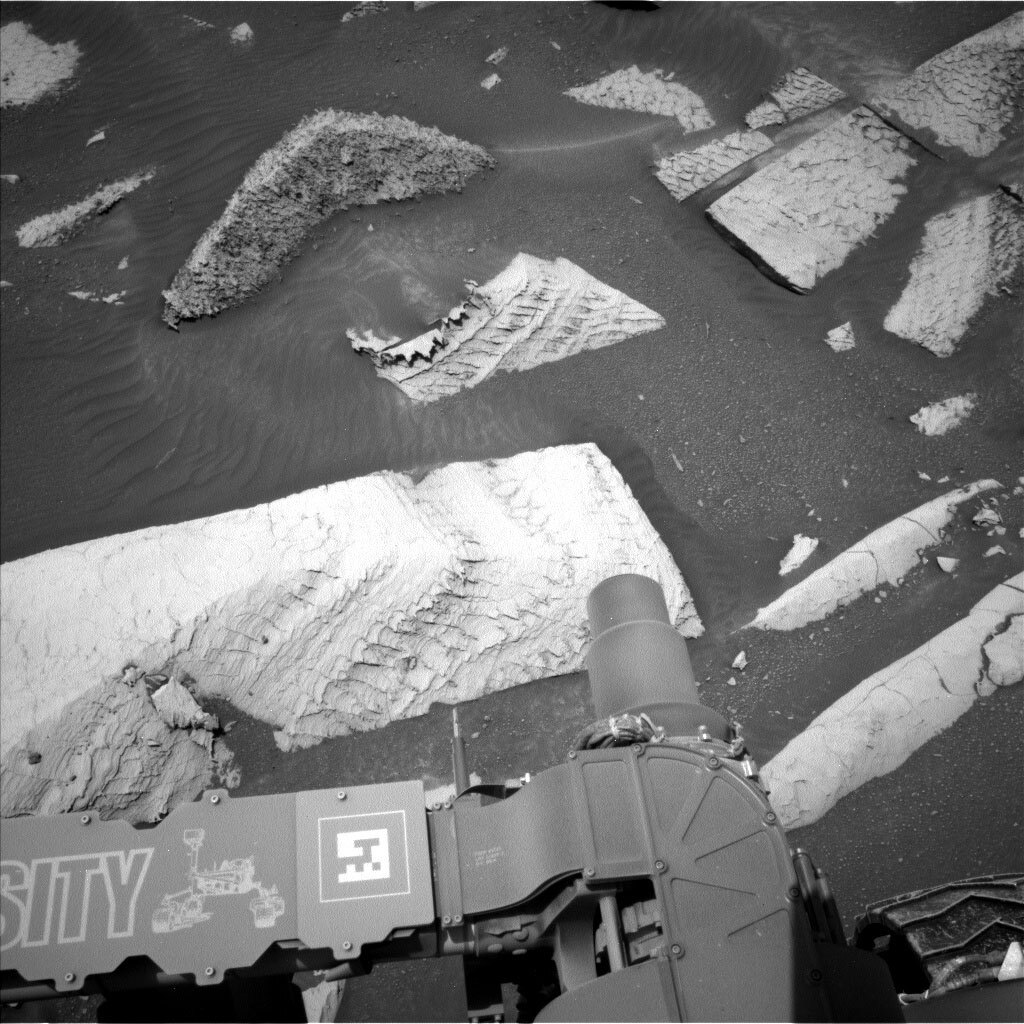Earth planning date: Friday, January 19, 2024.
This 3 sol weekend plan, like many of our recent plans (for example: here and here), focuses heavily on the fractures and cracks in this area. We are interested in cracks and fractures and the fracture fill (the material between cracks) as the chemistry and the physical features can tell us lots about conditions at the time of their formation, including environmental conditions and timing of the cracks, relative to each other and the host bedrock. The polygonal fractures we saw last week are not as well developed here but there are so many other textures here to work with.
First we will focus on the large block at the front of the workspace. APXS will examine the brushed bedrock target "Mount Langley," an area without any obvious fractures on the top of the slab to determine the bulk chemistry of the rocks in this area. Then we look at fracture fill in "Sleeping Beauty's Tower" in one of the sub-vertical parallel lines or fractures (crosscutting the horizontal layers) along the side of the large block. In addition to the typical MAHLI imaging of a science target, the MAHLI team opted to add frames around this target, giving even more topographic information. ChemCam will use LIBS to look at "Moraine Lake," an area of polygonal features on the top of the block, and Mastcam will image the whole block. ChemCam will also use LIBS on "Penstemon," a rather gnarly looking smaller block in the workspace, and take a passive raster on layering at "Vidette Meadow."
Mastcam will take several other mosaics. The "Chickenfoot Lake" mosaic is a 7 by 4 mosaic (4 rows of 7 slightly overlapping images) covering another area of polygons to the left of the immediate workspace. "Diaz Pass" is a smaller (4x2) mosaic focused on a linear zone of shattered appearing rock, surrounded by large bedrock blocks, roughly 17 metres on the right-hand side of the rover. On Tuesday, Mastcam imaged potential polygons in the "Incense Cedar" target; today, we will take a further 3x2 mosaic of the same target, looking this time at some bedding layers side-on. Further afield, the ChemCam RMI will be used to study the stratigraphy at the base of the large butte "Texoli" and an area along the Gediz Vallis ridge.
Of course, geology is not the only focus for this plan – the environmental theme group (ENV) have several activities too. REMS will measure temperatures, whilst Mastcam solar taus monitor the dust in the atmosphere, allowing us to track any increases or decreases in dust content. A series of movies looking for dust devils and for dust in out towards the crater rim will be carried out over the three sols of the weekend plan.
All this and a drive too – heading onwards to see where we end up next!
Written by Catherine O'Connell-Cooper, Planetary Geologist at University of New Brunswick-Cooper
from NASA Mars Rover Curiosity: Mission Updates https://ift.tt/6ciDMxg

Comments
Post a Comment